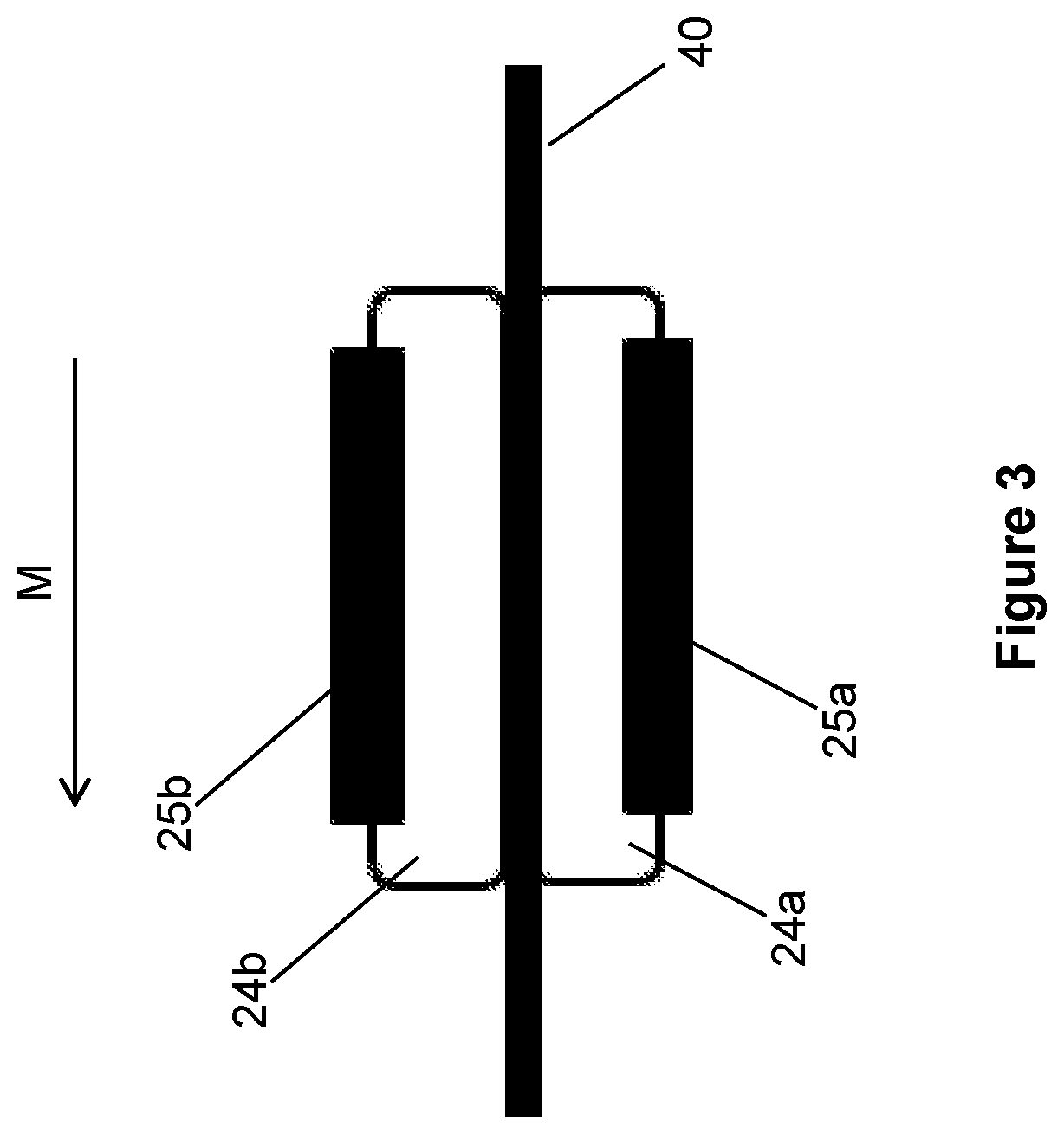Apparatus and method for drying hair
a technology for drying hair and hair, applied in the field of apparatus for drying hair, can solve the problems of difficult user, noisy conventional hairdryer, heavy and bulky, etc., and achieve the effects of simple use, less awkwardness, and promotion of the drying process
- Summary
- Abstract
- Description
- Claims
- Application Information
AI Technical Summary
Benefits of technology
Problems solved by technology
Method used
Image
Examples
first exemplary embodiment
[0085]FIG. 1 illustrates (schematically in plan view, and in transverse cross-section) a first embodiment of a combination hair dryer / styler device 10. FIG. 2a is an enlargement of the transverse cross-sectional view shown in FIG. 1. The device 10 includes a vibrating plate 20 to impart vibration to wet hair, the vibrations being at a frequency and amplitude sufficient to cause hairs, which have clumped together when wet, to move and separate. The device 10 includes a heated plenum chamber 22, heater plates 24a-d (each of which may optionally be provided with a comb or bristles to one side, to aid styling), and a fan 26 to deliver a flow of air 32 towards the hair 40 to be dried.
[0086]In more detail, the dryer / styler device 10 comprises first and second mutually-opposing arms 12, 14, arranged in a broadly similar manner to the arms of a handheld hair styler. The first arm 12 and the second arm 14 (which is substantially parallel to the first arm, effectively “above” the first arm, a...
PUM
 Login to View More
Login to View More Abstract
Description
Claims
Application Information
 Login to View More
Login to View More - R&D
- Intellectual Property
- Life Sciences
- Materials
- Tech Scout
- Unparalleled Data Quality
- Higher Quality Content
- 60% Fewer Hallucinations
Browse by: Latest US Patents, China's latest patents, Technical Efficacy Thesaurus, Application Domain, Technology Topic, Popular Technical Reports.
© 2025 PatSnap. All rights reserved.Legal|Privacy policy|Modern Slavery Act Transparency Statement|Sitemap|About US| Contact US: help@patsnap.com



